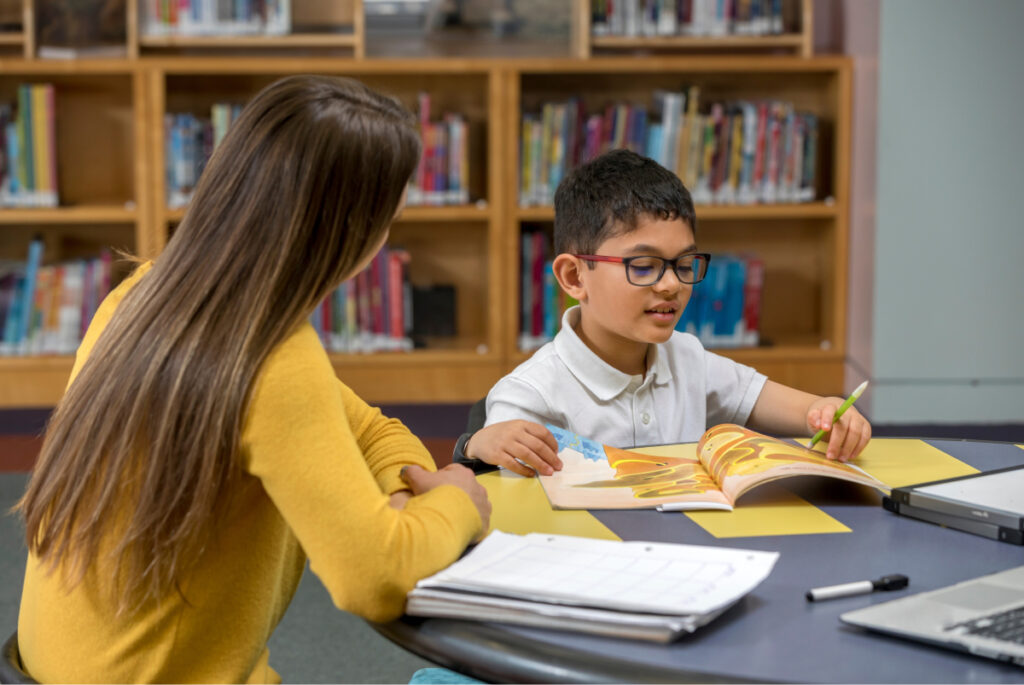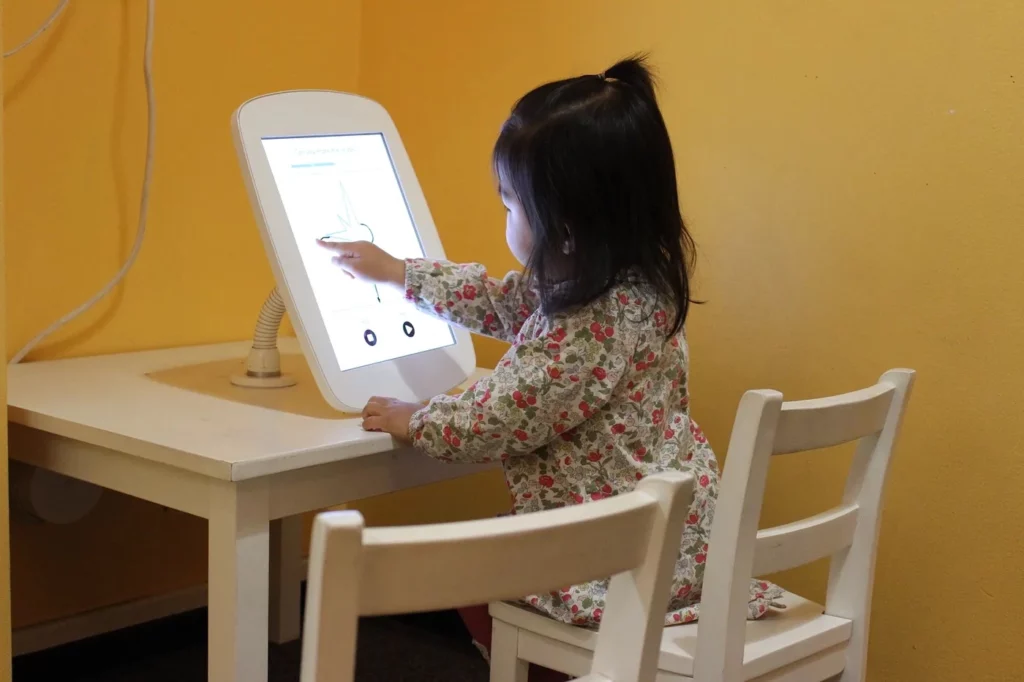Imagine a novel approach to in-school tutoring that hardly interrupts class instruction at all, because tutoring sessions take at most 10 minutes a day. And imagine that it works.
A study by Stanford researchers finds that “short bursts” of tutoring during the school day result in significant improvements in young students’ literacy skills, affirming the potential of a relatively low-cost and sustainable approach to helping children learn to read.
The study, conducted by researchers at the National Student Support Accelerator (NSSA) at Stanford University, evaluated the impact of an early literacy tutoring program for students in kindergarten and first grade. Students who participated in the program achieved greater reading fluency and were less likely to be classified as at-risk on a district literacy test than students who did not receive the tutoring, the researchers found.
Previous research has shown that high-impact tutoring – a model characterized by intensive, relationship-based, individualized instruction – is most effective when implemented during the school day several times per week with a consistent tutor and aligned with what a student is learning in class, said study co-author Susanna Loeb, a professor at Stanford Graduate School of Education and the founder and executive director of NSSA.
According to the National Center for Education Statistics, 39 percent of public schools from elementary to high school now offer some form of high-impact tutoring. Evidence supports the effectiveness of high-impact tutoring over other academic interventions, such as technology support or even smaller class-size, Loeb said.
This latest research from NSSA adds to the body of evidence, with an emphasis on a “short burst” model involving tutoring sessions that last only five to seven minutes, for kindergarteners and first graders. The findings were released in a recent research brief published by NSSA.
“We know that one-on-one, personalized tutoring produces the most significant improvements in reading, but many programs like that can be costly and hard to scale,” said Loeb. “This research provides promising evidence that a low-cost program – one that’s easily incorporated into the school day – can help advance reading skills in even the youngest students.”
Individualized instruction for students in need
NSSA, a program of the Systems Change for Advancing Learning and Equity (SCALE) initiative at the Stanford Accelerator for Learning, works to improve access to high-impact tutoring for students in need. NSSA conducts research on high-impact tutoring and provides resources to help schools and tutoring organizations implement high-quality programs at scale.
For this study, NSSA evaluated the impact of a tutoring program implemented in a large Southeastern U.S. school district by Chapter One, a global nonprofit. Through the program, part-time tutors are embedded into classrooms to provide the frequent "short bursts" of instruction.
Tutors meet one-on-one in the back of the classroom over the course of a school year during opportune moments. The short sessions minimize interruptions in the school day and take young students’ typically short attention spans into account.
Children making adequate progress might only see their tutor a couple times a week, while those who are far behind receive daily sessions. All of the students spend an additional 15 to 20 minutes several days a week practicing with learning software on individual tablet computers provided by the program. The approach was designed to ensure that students receive individualized instruction when they need the support, and to foster strong relationships between students and their consistent tutors.
During the 2021-22 school year, more than 800 kindergarten students were randomly assigned to one of two groups for the study, with about half receiving supplementary tutoring with the Chapter One program. The study continued during the 2022-23 school year, while the children attended first grade. There are two years remaining in the study as it follows the students to the end of third grade.
By the tutoring program’s second year of implementation, students in the test group showed a meaningful increase in oral reading fluency, and a reduced likelihood of being classified as at-risk on the district literacy exam (45 percent of students in the test group were classified as at-risk, compared with 54 percent in the control group). The findings build on promising results seen in the study's first year, which found that students who participated in the program were more than twice as likely to reach the target reading stage by the end of kindergarten as students in the control group.
Overcoming common barriers
The findings indicate that high-impact literacy tutoring can be implemented in a cost-effective and sustainable way, Loeb said.
The Chapter One program currently costs school districts $375 per student, which includes the cost of the tutors, tablets, and indirect costs of implementing the program. “Even in larger implementations that might involve thousands of students, the cost would be substantially lower per student than the vast majority of other types of tutoring programs,” said Loeb.
Earlier research by NSSA has shown that educators and school leaders cite scheduling and logistics as common barriers to implementing high-impact tutoring, and the researchers pointed to the advantage of the short-burst model as a scalable program that school districts could adopt and easily infuse into their school day.
In an article for The 74, a nonprofit news organization covering the American education system, literacy coach Ingrid Rosales described the minimal interruption this form of tutoring presents. “It kind of runs itself,” said Rosales, who works at Orange Brook Elementary, a Title I school in Hollywood, Florida. “It doesn’t really interfere with our instruction.”
High-impact tutoring “could be a game-changer” in education, Loeb said, by offering an affordable and sustainable solution to improve early literacy. “As COVID-relief funding winds down, these findings present a compelling case for prioritizing tutoring interventions going forward.”



